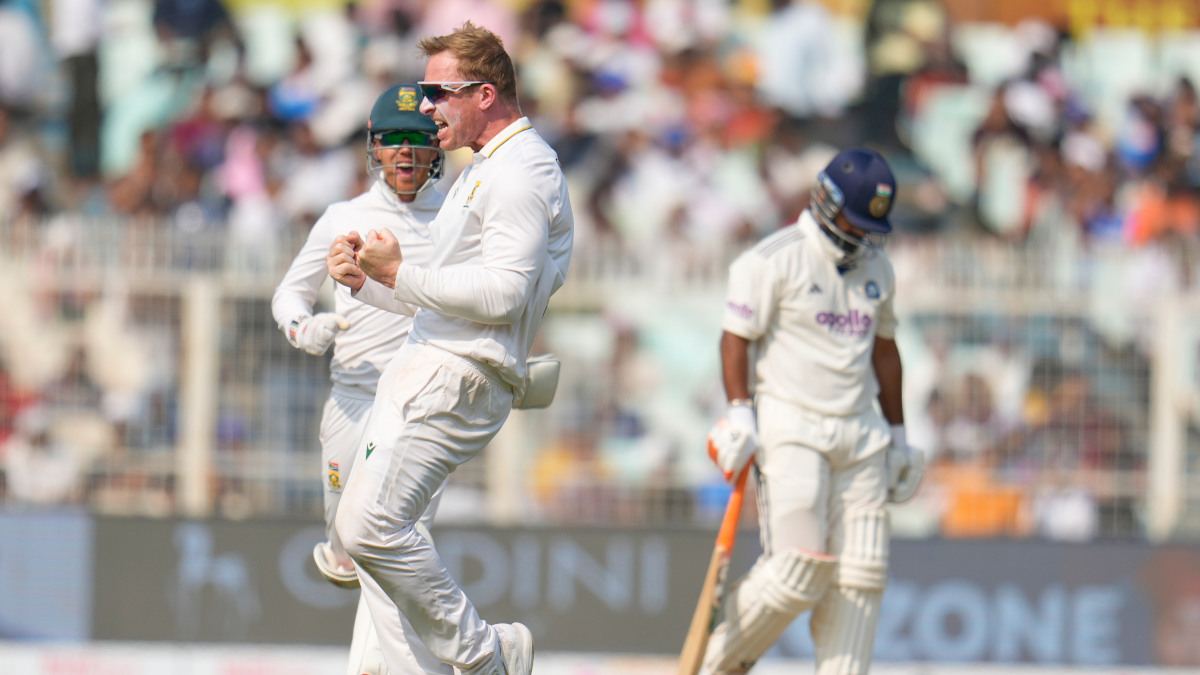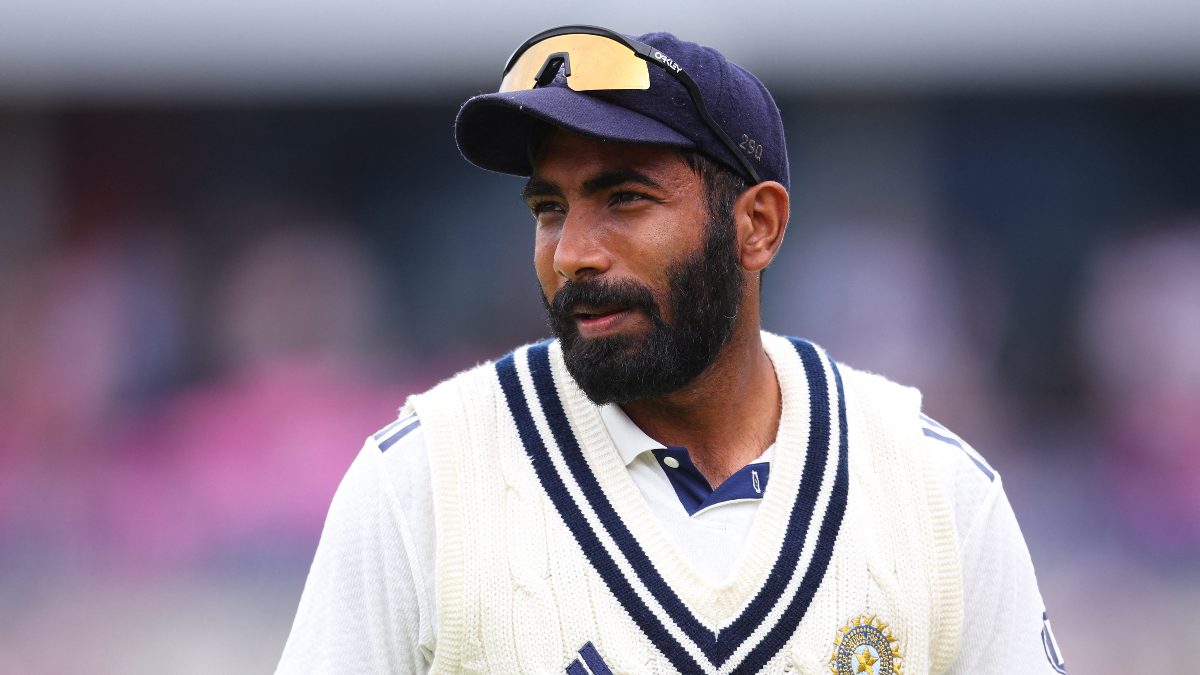November 15, Eden Gardens, Kolkata. The ball is jagging around. It is staying low. It is rearing up. It is ragging. And it is spitting through. Batting is tough. Scoring runs and batting time, even tougher.
India have a 30-run lead as South Africa begin their second innings. Ryan Rickelton is on strike to Jasprit Bumrah. New ball in play and that, on most days, is a difficult gig, let alone when the track is behaving like this.
Second ball of the third over now. Bumrah runs in and the ball barely gets up. Rickelton, hopping around, dangles his bat and gets the faintest of tickles (off the toe-end, no less) before getting thumped on the back leg. Impact near the shin, and definitely much lower than where Rickelton would have expected the ball to finish.
A few wry smiles from those around. Most of those from batters who have already been chastened by the two-paced and erratic nature of the surface. But those soon turn to grimaces and slightly more worried looks because the third ball of the over kicks up and grazes Rickelton’s chest before flying past Rishabh Pant.
Indian pitches suddenly under scanner
And that, rather unfortunately, was what transpired all game. Where only the odd ball did not misbehave, and where every ball felt like an event. Although of the sort where the batters were trembling, hoping that one particular ball did not have their name on it.
The Test, unsurprisingly, finished well inside three days. And it finished with India wondering how things had gone so awfully pear-shaped, just like against New Zealand a year ago.
Quick Reads
View AllSouth Africa, of course, must be given their flowers. They kept at it, did not lose hope and eventually fought back from being bowled out for 159 on day one.
Temba Bavuma, who has now won 10 of the 11 Tests he has captained in, was at the forefront, courtesy a gutsy knock. Simon Harmer, returning to the country where he took ten wickets in four innings in 2015, bagged the Player of the Match award, with Corbin Bosch and Marco Jansen, in Kagiso Rabada’s absence, also playing their roles to perfection as South Africa won a Test against India in India for the first time since 2010 (in Nagpur).
That tells you how rare Indian Test defeats are at home. But since the start of last year, those seem to be coming by very often. And a discerning trend is the pitches India have played on.
In the series against New Zealand, India opted to dish out rank turners after getting rolled over for 46 in Bengaluru on a lively surface. India went past 250 only once in their remaining essays, and were blanked 3-0, capped off by a failure to chase 147 in the third and final Test in Mumbai.
The Kiwi spinners, who may have otherwise struggled to out-bowl India, flourished. Mitchell Santner, in particular, had the ball on a string and thrived in those helpful confines. The modus operandi deployed by Santner was, to a great extent, replicated by Harmer in Kolkata. He held a length, held a line and let the pitch do its thing. Meaning the batter was always caught in two minds – on if to come forward or stay back, and on whether the ball would turn or go on with the arm.
Creating that sort of confusion and chaos in the batters’ minds becomes very difficult on unhelpful tracks, which, historically, has made the Indian spinners stand out. The seamers, who would be accustomed to bowling fuller lengths and targeting the stumps, also become more effective because they do not really have to venture away from what they normally do.
At the Eden Gardens, the ball was reacting erratically to every style of bowling. There was simply no respite. A ball was honing into a batter’s shin off a length and then tagging him near the chest a ball later, off the same length and by the same bowler.
That, undeniably, will make the pitch the big talking point from the contest. And if India are actually worse off playing on home pitches that do all sorts. Because everything, suddenly, is at the mercy of the conditions and the opposition, rather than India being in control of every single ball, every single moment, and every single significant play.
Did ‘GG’ err by asking for a minefield at Eden?
India’s head coach Gautam Gambhir, in the aftermath of the Kolkata result, has, rather brazenly, suggested this is exactly the sort of pitch India wanted. The curator then, delivered. Perhaps even exceeded expectations. But with India having fared rather disastrously since this recent change in tack, with memories of that New Zealand drubbing still fresh, they might be better served asking for a more balanced surface, which would then allow the virtues that have historically held sway in the format, to shine through. Rather than it being reduced to a game of a fortune.
That is what it felt like for large parts of the contest in Kolkata. A bowler always felt he was in with a shout. Often, that is painted as a hallmark of a great cricketer, but only when that conclusion is based on the bowler’s skill, and the bowler’s ability to prise something out of nothing.
Test cricket, as a spectacle, may not have suffered because this was darn entertaining and intriguing. An event-a-ball never really gets boring. But it is also tough to escape the supposition that this contest did not really test the skills this format is mandated to and was created to.
A watershed triumph for the Proteas
Test matches should not finish inside seven sessions. And more so when that Test is between a side that has regularly been indomitable at home, and the world champions.
That should not take the sheen off South Africa’s win, though. This should remain a watershed victory in this part of the world for this group. And it should remain a victory fashioned by overcoming the conditions, rather than one because of it.
It is just a shame that this game, which will go down as a bonafide thriller, did not have the ideal setting, or did not take place in ideal conditions. Maybe that is what made it a thriller in the first place. Or maybe not.
What is for certain, though, is that this latest defeat will get India thinking. On what their strength is, especially at home. And if it involves going back to surfaces that give their batters a chance to set their stall out, and gives their bowlers the opportunity to weave their magic by utilising their ability to drop it on a dime.
New Zealand, when they rocked up last year, busted the myth that raging turners would lead, inevitably, to Indian wins. They ensured India lost that particular roll of the dice, that series, and a spot in the WTC final. And the shift to drier surfaces came back to bite the hosts. South Africa, on a strip that did not just aid spin, but also brought the pacers into play through its dryness and variable bounce, meted out that exact fate.
And now, India and their fans are the ones left grimacing. No longer just looking at the conditions. But by knowing that if South Africa are offered something similar in Guwahati, they might just make India relive the ghosts of that New Zealand series all over again.


)

)
)
)
)
)
)
)
)



